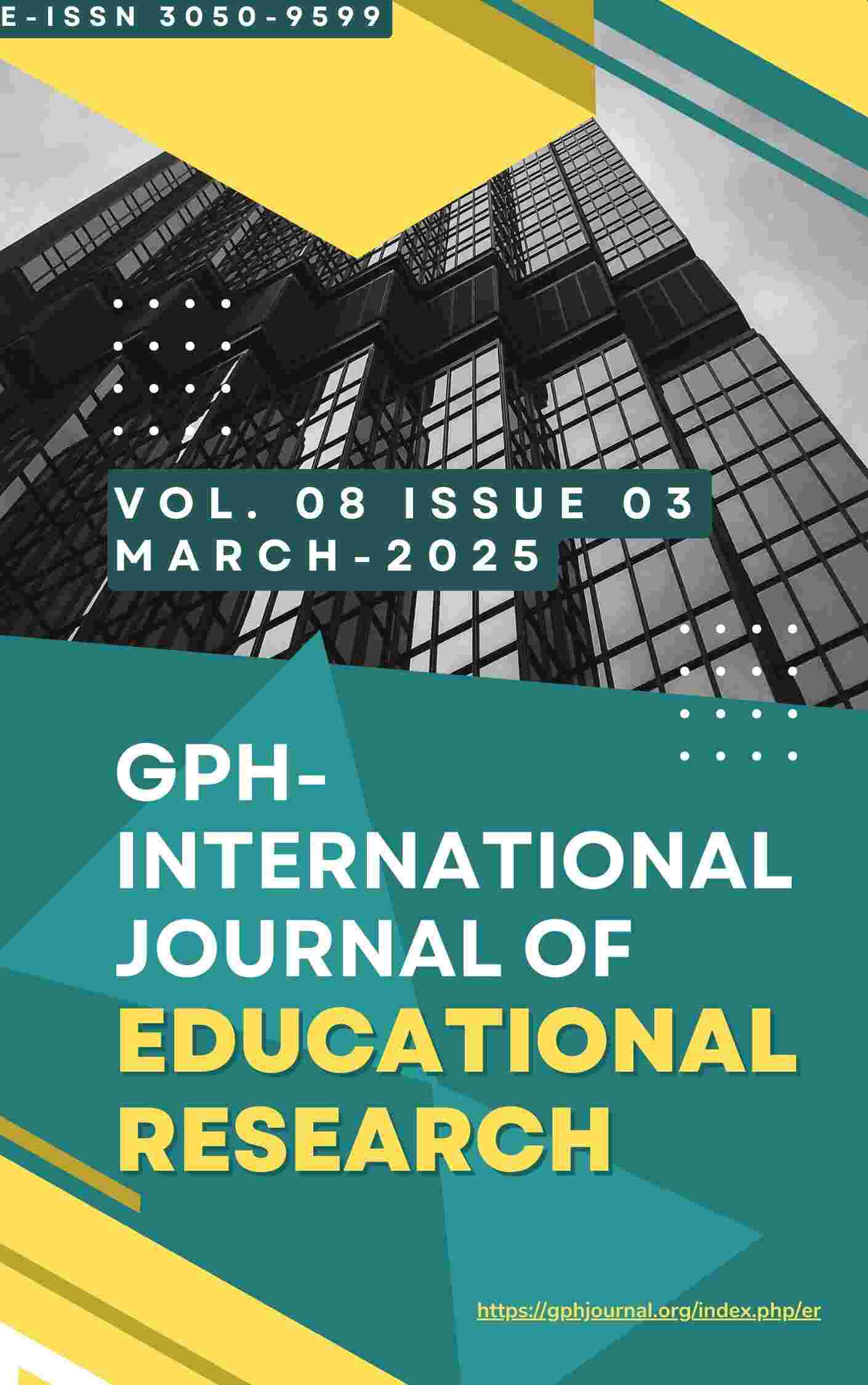Effects of Imitation Therapy for Non-Verbal Children with Autism in Zambia
Abstract
As infants develop, the skill of imitation typically emerges. This skill serves an important cognitive and social function in a child’s development (Ingersoll, 2011) and is essential for the development of language. Unfortunately, many children with autism (CA) have demonstrated deficits in imitation skills, and they show a general failure to understand relationships and communicate (Heinmann et al., 2006). Some initial studies have suggested that teaching the skill of imitation to CA leads to improvements in their social functioning, language, joint attention, and spontaneous gesture use (Ingersoll, 2008; Ingersoll & Schreibman, 2006). A specific imitation therapy intervention developed by Zedler (1972) resulted in increased verbalizations for non-verbal children who did not imitate (Gill et al., 2011). Unfortunately, there is no data to demonstrate that this technique has been used with children in Zambia, and, in fact, there is very little data or research on treatment of non-verbal CA in Zambia (Kabali et al, 2019; Nyoni & Serpell, 2012). This study attempted to ascertain preliminary data on the treatment of CA in Zambia. It involved utilization of imitation therapy with three young children with suspected autism who were non-verbal. Effectiveness of the intervention was measured by counting the changes in the number of different phonemes, the total utterances, the number of non-verbal imitations, and the number of reciprocal verbal imitations produced by the children. For these three children, the intervention resulted in significant changes in all areas. This preliminary study suggests that imitation therapy may be an effective intervention for non-verbal CA in Zambia.
Downloads
References
Field, T. (2017). Imitation enhances social behavior of children with autism spectrum disorder: A review. Behavioral Development Bulletin, 22(1), 86–93.
Fuller, E. A., & Kaiser, A. P. (2020). The effects of early intervention on social communication outcomes for children with autism spectrum disorder: A meta-analysis. Journal of Autism and Developmental Disorders, 50(5), 1683–1700.
Gill, C., Mehta, J., Fredenburg, K., & Bartlett, K. (2011). Imitation therapy for non-verbal toddlers. Child Language Teaching and Therapy, 27(1), 97–108. https://doi.org/10.1177/0265659010375179
Heimann, M., Laberg, K., & Nordoen, B. (2006). Imitative interaction increases social interest and elicited imitation in non-verbal children with autism. Infant and Child Development, 15, 297–309. https://doi.org/10.1002/icd.463
Ingersoll, B. (2008). The social role of imitation in autism: Implications for the treatment of imitation deficits. Infants and Young Children, 21(2), 107–119.
Ingersoll, B. (2011). The differential effect of three naturalistic language interventions on language use in children with autism. Journal of Positive Behavior Interventions, 13(2), 109–118.
Ingersoll, B., & Lalonde, K. (2010). The impact of object and gesture imitation training on language use in children with autism spectrum disorder. Journal of Speech, Language, and Hearing Research, 53(4), 1040–1051.
Ingersoll, B., Lewis, E., & Kroman, E. (2007). Teaching the imitation and spontaneous use of descriptive gestures in young children with autism using a naturalistic behavioral intervention. Journal of Autism and Developmental Disorders, 37(8), 1446–1456.
Ingersoll, B., & Schreibman, L. (2006). Teaching reciprocal imitation skills to young children with autism using a naturalistic behavioral approach: Effects on language, pretend play, and joint attention. Journal of Autism and Developmental Disorders, 36(4), 487–503. https://doi.org/10.1007/s10803-006-0089-y
Kabali, C. T., Nyoni, J., & Mwanza, H. (2019). Awareness and knowledge associated with autism spectrum disorders among university students in Zambia. Journal of Autism and Developmental Disorders, 49(9), 3571–3581.
Krug, D. A., Arick, J. R., & Almond, P. J. (2008). Autism Behavior Checklist, ASIEP-3. Pro-Ed.
Meline, T. (2010). A research primer for communication sciences and disorders. Pearson.
Meltzoff, A. N., & Moore, M. K. (1977). Imitation of facial and manual gestures by human neonates. Science, 198(4312), 75–78.
National Autism Association. (2020). https://nationalautismassociation.org/
Nyoni, J., & Serpell, R. (2012). The impact on parents of raising a young child with autism: A phenomenological study of parents in Lusaka, Zambia. International Journal of Disability, Community & Rehabilitation, 11(1), 1–25.
Peele, M. (2022). Effects of imitation therapy for non-verbal children with autism in Zambia. This article includes data reported as part of the author’s doctoral dissertation.
Peele, M. M., Gill, C., & Wainscott, S. (2020). Progress in education of children with disabilities in Zambia. Perspectives of the ASHA Special Interest Groups, 5(6), 1820–1827.
Penney, A., & Schwartz, I. (2019). Effects of coaching on the fidelity of parent implementation of reciprocal imitation training. Autism, 23(6), 1497–1507.
Radhakrishna, S. (2010). Application of integrated yoga therapy to increase imitation skills in children with autism spectrum disorder. International Journal of Yoga, 3(1), 26.
Rogers, S. J. (1999). An examination of the imitation deficit in autism. In J. Nadel & G. Butterworth (Eds.), Imitation in Infancy (pp. 254–283). Cambridge University Press.
Rogers, S. J., & Pennington, B. F. (1991). A theoretical approach to the deficits in infantile autism. Development and Psychopathology, 3(2), 137–162.
Sigman, M., & Ungerer, J. A. (1984). Cognitive and language skills in autistic, mentally retarded, and normal children. Developmental Psychology, 20(2), 293.
Stern, D. N. (1985). The interpersonal world of the infant: A view from psychoanalysis and developmental psychology. Basic Books.
Uzgiris, I. C. (1981). Two functions of imitation during infancy. International Journal of Behavioral Development, 4(1), 1–12.
Williams, J. H., Massaro, D. W., Peel, N. J., Bosseler, A., & Suddendorf, T. (2004). Visual–auditory integration during speech imitation in autism. Research in Developmental Disabilities, 25(6), 559–575.
Wonani, L., & Muzata, K. K. (2019). Parenting and educating children with autism: Lived experiences of Lusaka parents-Zambia. International Journal of Sciences: Basic and Applied Research, 48(6), 20–36.
Zedler, E. (1972). Social management. In J. Irwin & M. Marge (Eds.), Principles of Childhood Language Disabilities (pp. 355–391). Appleton-Century Crofts.
Author(s) and co-author(s) jointly and severally represent and warrant that the Article is original with the author(s) and does not infringe any copyright or violate any other right of any third parties, and that the Article has not been published elsewhere. Author(s) agree to the terms that the Global Publication House will have the full right to remove the published article on any misconduct found in the published article.























